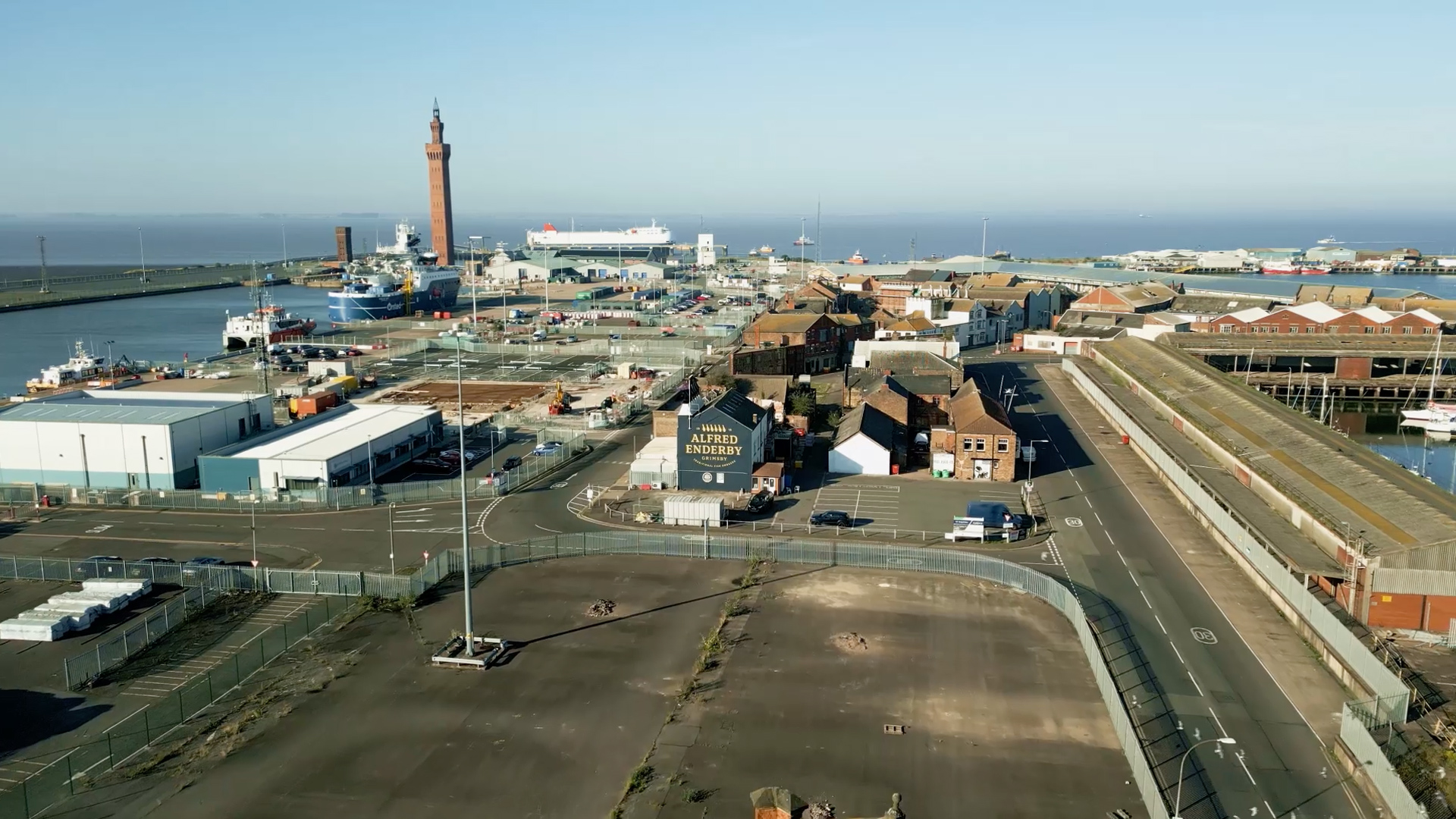
Photos by Dirk Lindner. Pre-restoration photos by James Brittain
On the Isle of Sheppey in north Kent, looking out over the Thames Estuary, is Sheerness Dockyard Church – winner of RICS’ 2024 UK Project of the Year Award.
It was first built in 1828, designed by George Ledwell Taylor, surveyor of buildings to the navy. Sheerness was an important naval base from the mid-17th century until 1960, when it closed, and the church was later deconsecrated in the 1970s. The church fell into disrepair for several decades until it was gutted by a huge fire in 2001 that left it without a roof and completely exposed to the elements.
It was emblematic of an economically deprived area of the UK that had once been a busy naval base and was now suffering from a lack of jobs and opportunities for the people who lived there. In a 2019 survey of the UK’s council districts, Swale, where Sheerness is located, was found to be one of the poorest wards in the country.
All of which meant there was very little chance of the local authorities finding the resources to restore an historic Grade II* listed Georgian church. Not only that, but one of just four surviving dockyard churches in Britain (with the others to be found in Portsmouth, Chatham and Pembroke).
“This broken tower, this burnt-out building was symbolic of the fact that Sheppey had been abandoned by everyone,” says William Palin, CEO of Barts Heritage and client lead on the Sheerness Dockyard Church project. He first became aware of the church and its precarious state in 2006, while working with a preservation trust repairing a Tudor gatehouse on the Isle of Sheppey. He describes the church as “clinging on for dear life”.
After its deconsecration, the church went through several uses – “it became a boxing club for a long time, quite a famous one,” says Palin – before being bought by a local person who used it for storage until the fire of 2001.
The sorry state the building was in is echoed by Martin Ashley, managing partner at Martin Ashley Architects, who collaborated with Hugh Broughton Architects on the project. “I recently re-read our initial condition survey and my God I had forgotten… I can honestly say this one was all but lost,” he says.
Only half-joking, Palin adds: “People tell me that when they first met me onsite, they thought I was insane but kept it to themselves. If we knew what we were getting into when we set out, we would probably never have got going.”
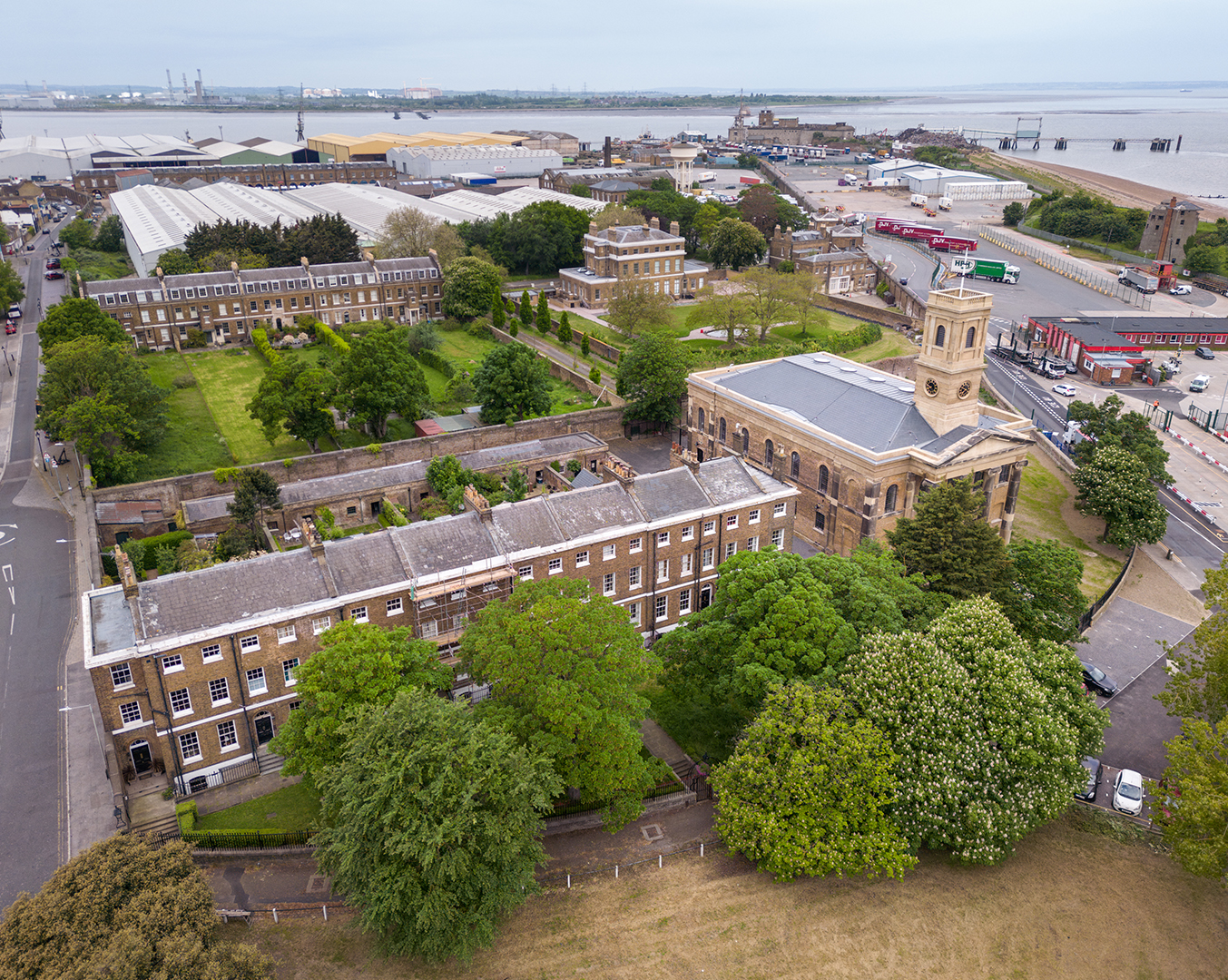
Move the slider to see the before and after
Heritage-led regeneration
Before Palin and the team he was assembling could even think about starting restoration work on the church, they needed to gain legal ownership of the site. But that was held by a developer who had planning permission to convert the church into housing – an unsympathetic design that had proved deeply unpopular with local residents. “It was never going to be feasible and we suspected he'd wait till the church fell down before he did anything,” says Palin.
“First of all, a few of us got together and managed to persuade Swale Council not to extend the planning permission. The council was very helpful and used a compulsory purchase order to obtain the site, which they then handed over to a new trust we’d set up called the Sheerness Dockyard Preservation Trust. Then we got stuck into working out what the building could possibly be in the future.”
Palin says the socioeconomic situation in Sheerness meant it was obvious the church should become something that would contribute to the town and its people, in “a process of heritage-led regeneration”.
“It was always envisaged that there would be an element of support for local young people developing independent businesses,” says Robert Songhurst, associate at Hugh Broughton Architects, who was project architect from the early design stages of Sheerness Dockyard Church’s restoration. “It’s also a co-working space with a café as part of a multi-threaded approach to make the site financially viable and sustainable.”
The Trust’s plans for the church received a warm welcome from Sheerness residents. On top of restoring the church and keeping a valued local landmark, it would gain a community use. The Trust was also involved in the renovation of the neighbouring houses in Naval Terrace – Georgian townhouses that needed attention but had the potential to be high-quality homes.
“Although it was deconsecrated, people still associated it with the symbolism of being a church, says Palin. “A lot of people locally have been christened there or sung in the choir. So we got some money from the Benefact Trust, which supports church projects. We made a little corner of the building a reflection area with some of the old pews, so people could come back and get a sense of what the church was like.”
Funding for the project came from a number of sources but the National Lottery Heritage Fund and Historic England were two of the primary backers. Putting the funding together and getting legal ownership of the site took many years, but once that was achieved it was time to engage the contractors, Coniston, in November 2020.
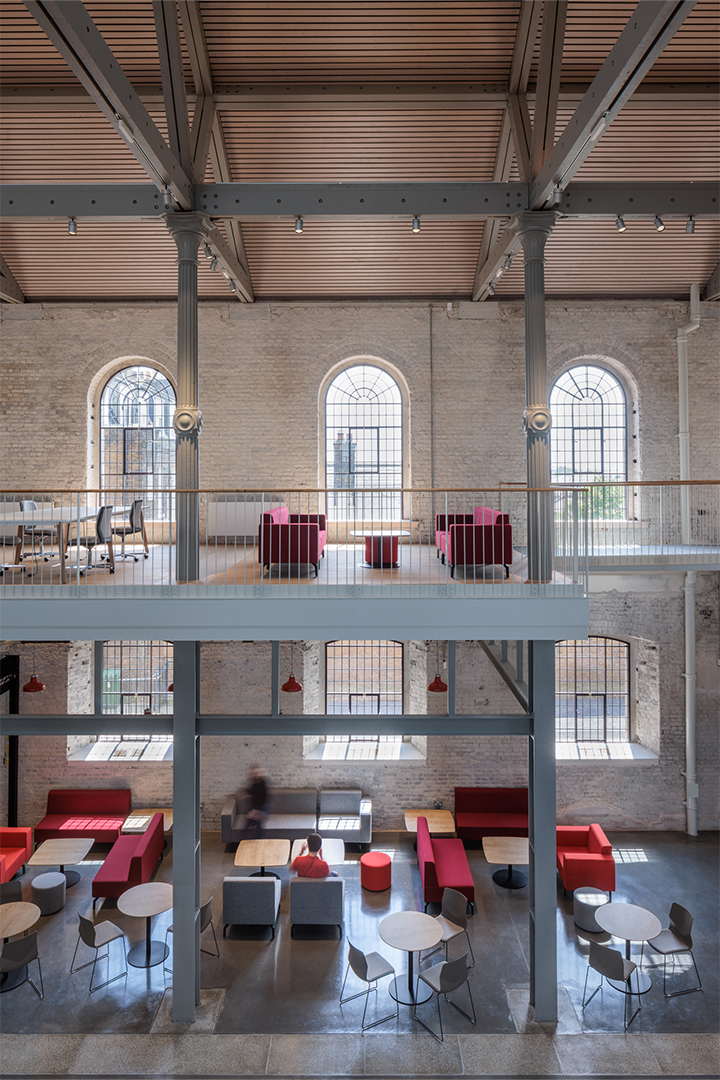
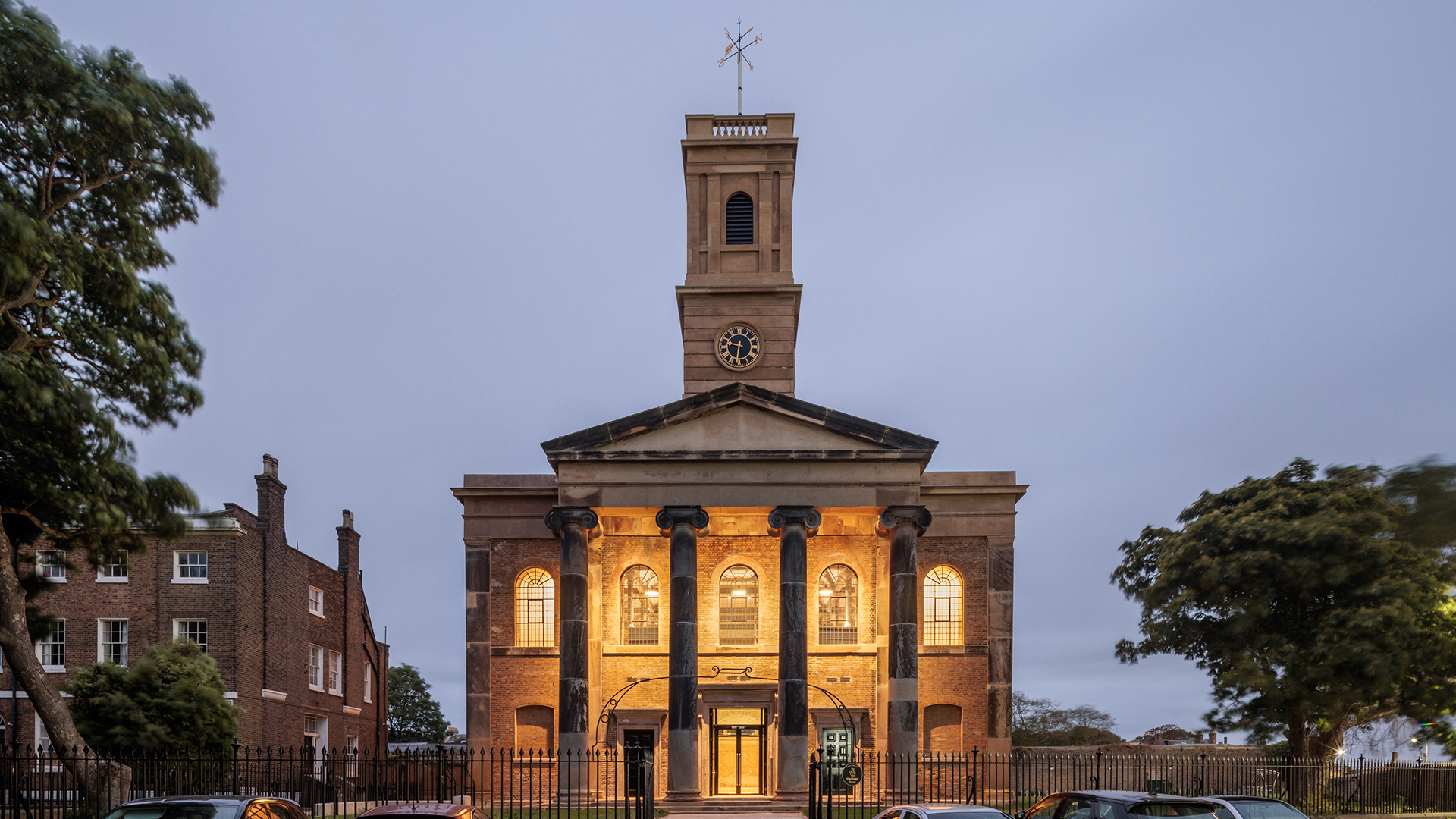
“This broken tower, this burnt-out building was symbolic of the fact that Sheppey had been abandoned by everyone” William Palin, Barts Heritage
Getting to work
Cast your mind back to November 2020 and you’ll remember that the middle of the COVID-19 pandemic was a less-than-ideal time to start a major restoration project. Kevin Moore, chair of the Sheerness Dockyard Preservation Trust, says: “We felt there was only one thing to do and that was to carry on once we had obtained quotes and were within, or almost within, budget.
“We had spoken to the contractors and it seemed reasonable, given the government’s stance on allowing building works to continue, to carry on. We tried to mitigate rising build costs by placing orders in advance and, given the circumstances, we managed with minimum delays.”
One of the biggest restoration challenges the team encountered was the church tower above the main entrance. As well as the 2001 fire, the church had survived one other big fire in its history, in 1881, and in both cases the tower had acted as a kind of chimney for the raging heat below.
“The heat of the fire from the burning galleries, pews and stalls in the nave had gone up the tower, burnt out the floors, burnt out the roof,” says Ashley of the 2001 fire. “The tower’s masonry had become super-heated and it was in a critical state.”
The church had also been altered during its restoration after the 1881 fire, and the Trust wanted to return it to the way it originally looked in 1828. “The philosophy was to restore the exterior of the building and the landscape and the precinct back to its early 19th century form,” says Palin.
Stone-by-stone, brick-by-brick, the tower was taken down to just its ironwork and rebuilt. “We examined and numbered every stone to be conserved,” says Ashley.
The fact it was shrouded behind protective sheeting offered an extra benefit, says Palin. “I didn't tell anybody locally we were taking the tower down because I was so terrified we'd run out of money and not be able to rebuild it.”
To the casual passer-by, the tower was there when the sheeting went up and it was there when the sheeting came down some months later. It was still fire damaged because they’d used the original materials wherever possible, but it was now structurally sound.
There was also a debate about whether to restore the original leaded glass windows, as some thought they would simply be broken by vandalism. But, according to Ashley, Palin convinced those voices that the church would be loved, not vandalised, and so leaded glass got the green light.
Move the slider to see the before and after
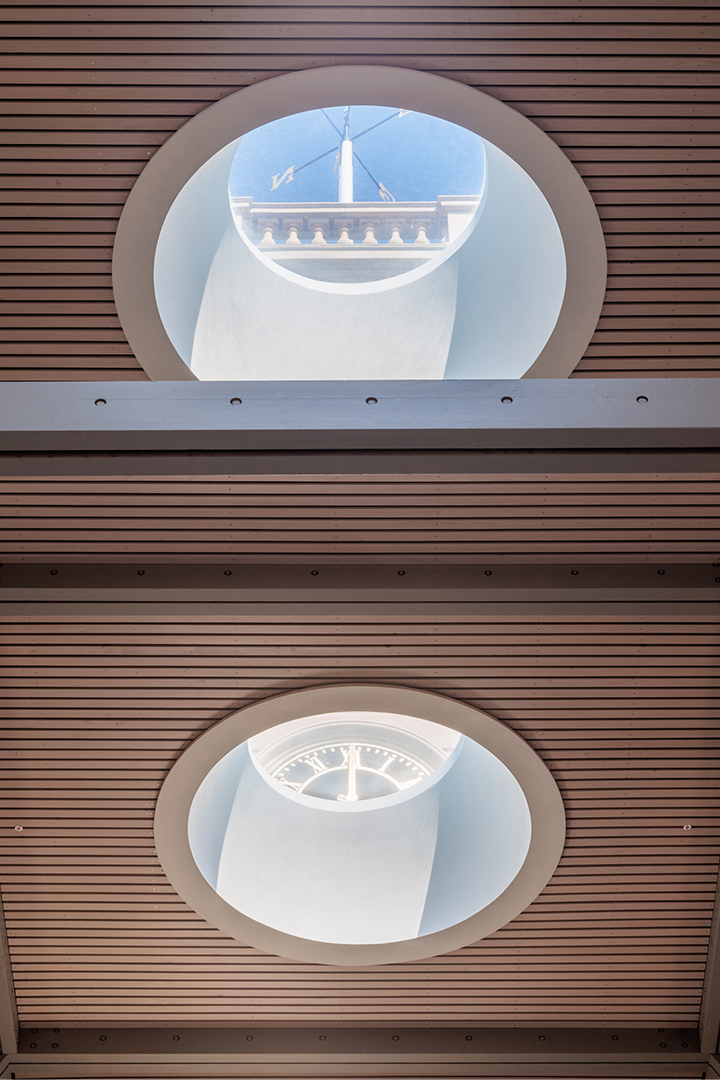
Move the slider to see the before and after
A unique restoration project
Kevin Moore, chair of the Sheerness Dockyard Preservation Trust, describes the design choices that made Sheerness Dockyard church such a special restoration.
“We decided to keep one cantilevered stone staircase in its derelict state and restore the other on the opposite side. It is a stark reminder of the original state in which we took on the building.
“A deliberate decision, both aesthetic and economic, was made towards minimum intervention with restoration of the interior. The plastered walls were stabilised and both plaster remnants and exposed brick whitewashed to create uniformity.
“Four pairs of cast iron columns originally supported the roof – the lower H section part of the columns supported the gallery with the upper, fluted decorative section supporting the roof. What we found was the lower-level columns were sound enough to re-support the new first floor galleries, but the upper-level decorative fluted columns were not strong enough to act in a supportive capacity anymore.
“Instead, new roof trusses span between the walls and pick up the new column heads to make it seem that the columns are still supporting the trusses when in fact the trusses are providing lateral support to the columns. The roof trusses consist of a steel flitch plate carrying vertical loads with glulam sandwiched on either side to provide stability. The trusses were built up from components onsite in a jig and craned into position.”
Regenerative effect
Once the restoration was complete, the day-to-day management of the building was handed over to Fruit Bowl Media, who run co-working spaces around Kent. The building is now known as IslandWorks at Dockyard Church and it has hosted cultural events such as immersive theatre, film screenings and even classical concerts that benefit from its excellent church acoustics. “They’ve taken it on enthusiastically and are engaging really well with the community and getting all those uses in there,” says Songhurst.
The successful Dockyard Church project has also lit the touchpaper for wider regeneration efforts in the region – in January 2023, Swale Borough Council was awarded £20m by the government for the Sheerness Revival project.
“Swale’s bid included three projects which would visibly change Sheerness town centre,” says Moore. “These are the regeneration of Beachfields, a dated health and leisure facility; an extension to Sheppey College; and the refurbishment of Masters House, to allow young entrepreneurs to have the opportunity to develop new business ventures.”
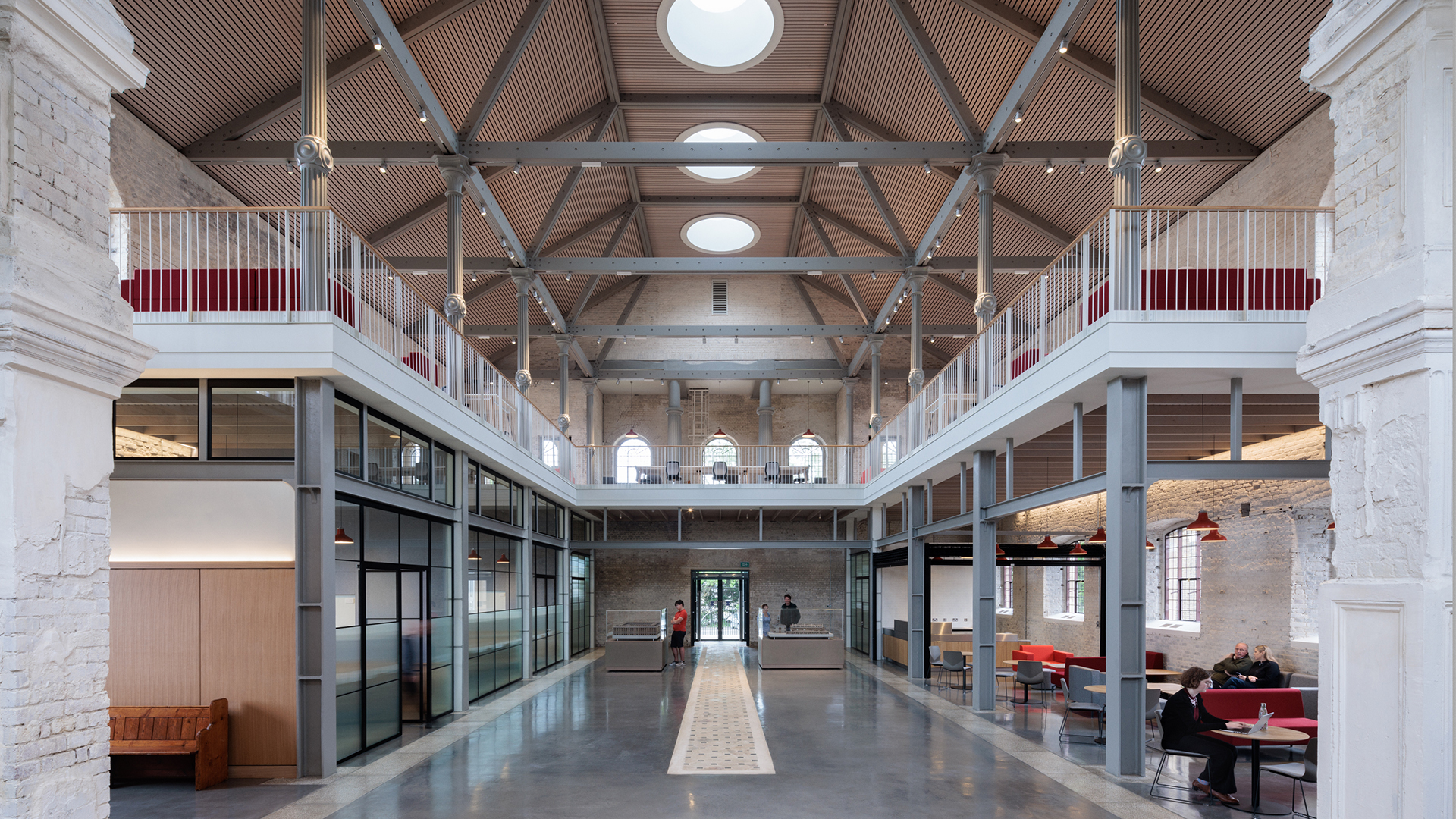
The recognition that comes from the RICS Award win (and a recent RIBA South East Building of the Year Award to boot) has been the icing on the cake for all involved. “It was total elation,” says Palin. “And the nice thing about this project is that if you can rescue this building there's no excuse for letting any other neglected historic building fall down.”
Songhurst adds: “I was pleased that the judges had clearly understood the project and the struggle that everyone had gone through. It felt brilliant to have that rewarded.”
The “intensely collaborative” nature of the project “with Historic England and Swale Council helping us along the way,” is something that Ashley believes made it such a success. “I was very proud for the Sheerness Dockyard Preservation Trust, because the church was rescued from impending loss for this wonderful beneficial use and a new life created for it.”
Moore reflects on the significant impact it’s had on a neglected area of the UK, and says: “I hope the success of this project demonstrates soaring ambition can win out.”
“The church was rescued from impending loss for this wonderful beneficial use and a new life created for it” Martin Ashley, Martin Ashley Architects
The verdict of the RICS Awards judges
The RICS Awards judges said: “A collaboration between Hugh Broughton Architects and Martin Ashley Architects has successfully guided the recent restoration of the Grade II* listed Sheerness Dockyard Church. It has been transformed from a fire damaged ruin to a welcoming new community hub on the Isle of Sheppey.
“The team achieved a delicate balance, working together since 2017 to deliver this exemplary heritage-led regeneration scheme. Innovative techniques have preserved the church’s exterior and lost elements have been reconstructed. Inside, original features have been maintained, striking a balance with new functions to create a welcoming space for community engagement.”
Awards judge Kerry Gibbs MRICS added: “This restoration has faithfully preserved the church's historical integrity while creating a dynamic, future-focused space for social empowerment.”


